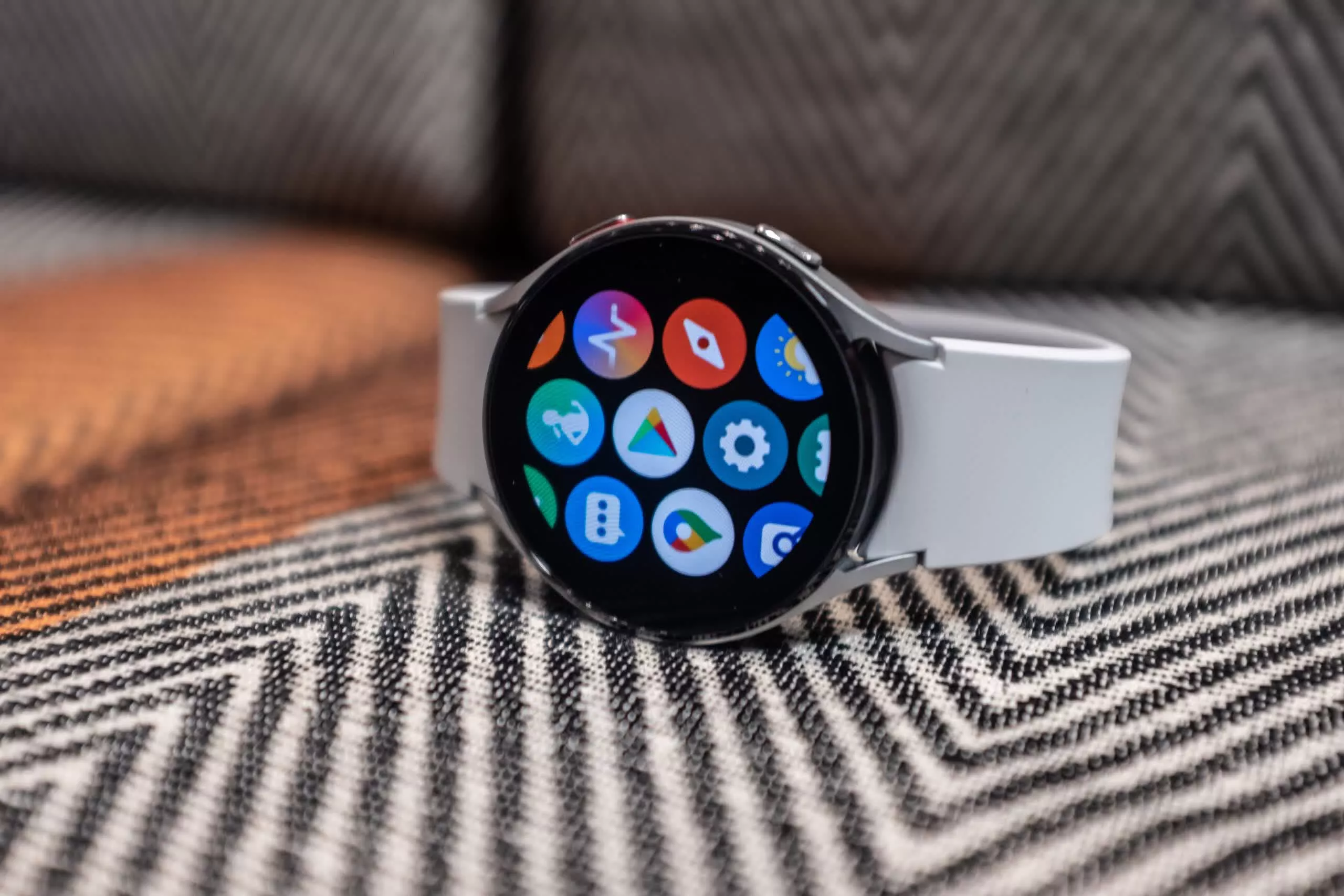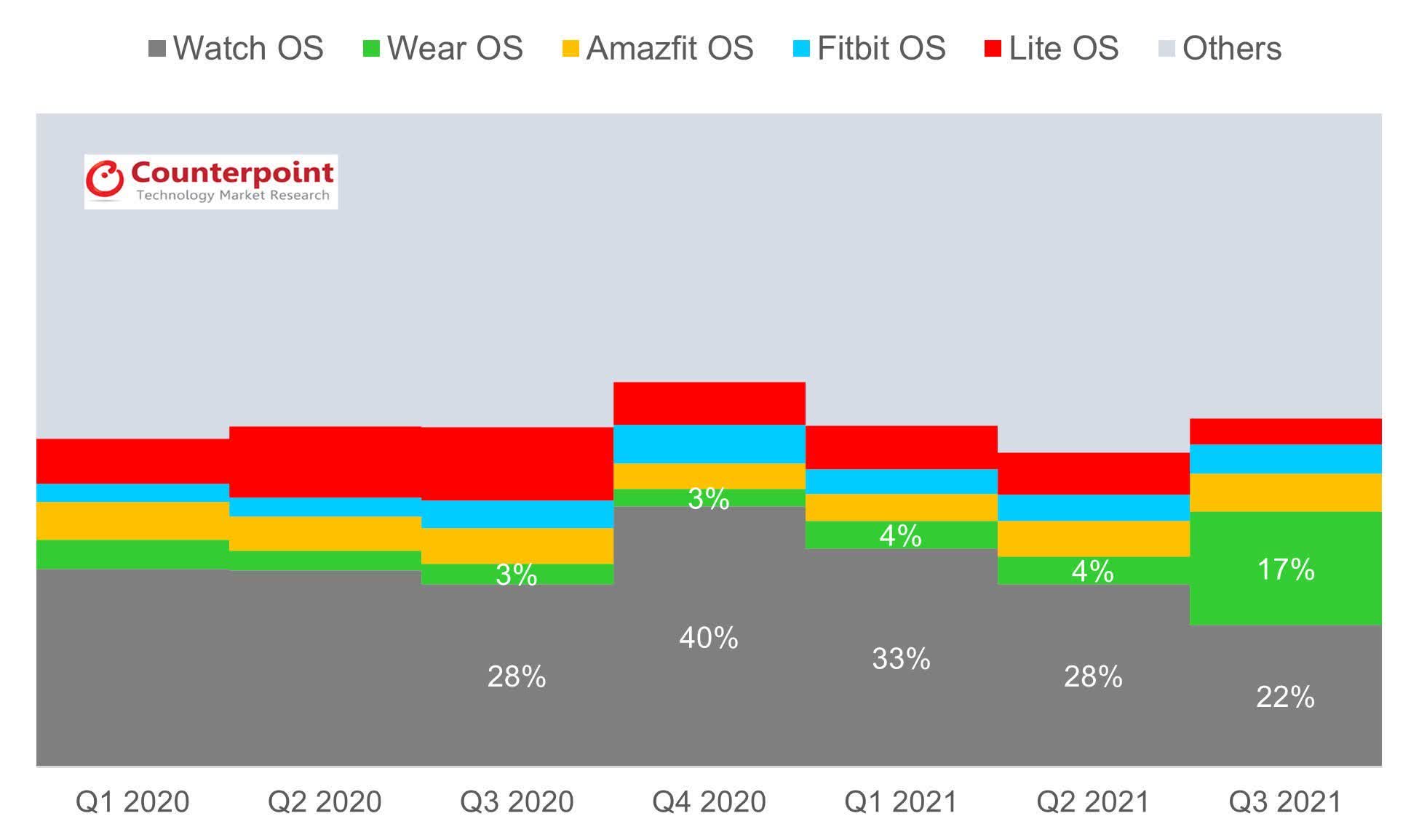In brief: While Apple is still on top of the smartwatch market in the third quarter of 2021, Google's Wear OS made a significant leap in closing the gap. Analysis firm Counterpoint Research attributes the gain to Samsung's recent adoption of Wear OS for the Galaxy Watch 4.

On Monday, Counterpoint Research revealed market shares for wearable operating systems since the first quarter of 2020. Until Q3 2021, Apple's watchOS has held on to at least a 28-percent share. However, Wear OS surged from four percent in Q2 2021 to 17 percent in Q3, quickly claiming second place and pushing Apple's share to 22 percent.
Counterpoint senior analyst Sujeong Lim pins this entirely on Samsung's switch from its own Tizen OS to Google's Wear OS for the Galaxy Watch 4. She believes Google couldn't achieve much in wearables on its own.
"This is because Google controlled smartwatch OEMs from customizing the UI, and it was not chosen by them due to its lower power efficiency and slow response time," Lim said.

Counterpoint also thinks the delay of Apple Watch Series 7 into Q4 2021 was a factor.
When Samsung originally announced Galaxy Watch 4's switch to Wear OS, it was expected to bring more software to the Galaxy Watch and, in turn, broaden the reach of Wear OS. Not only has Samsung significantly pushed Wear OS's market share forward, but the Galaxy Watch 4 also achieved number two in smartwatch shipments. Another chart from Counterpoint shows Samsung's shipments appearing to eat into Huawei's over the last year.
Counterpoint's Global Smartwatch Model Tracker also shows global smartwatch shipments in Q3 increased 16 percent overall year-over-year. Samsung, in particular, achieved its "highest quarterly shipments."
https://www.techspot.com/news/92338-wear-os-market-share-quadruples-q3-2021-thanks.html